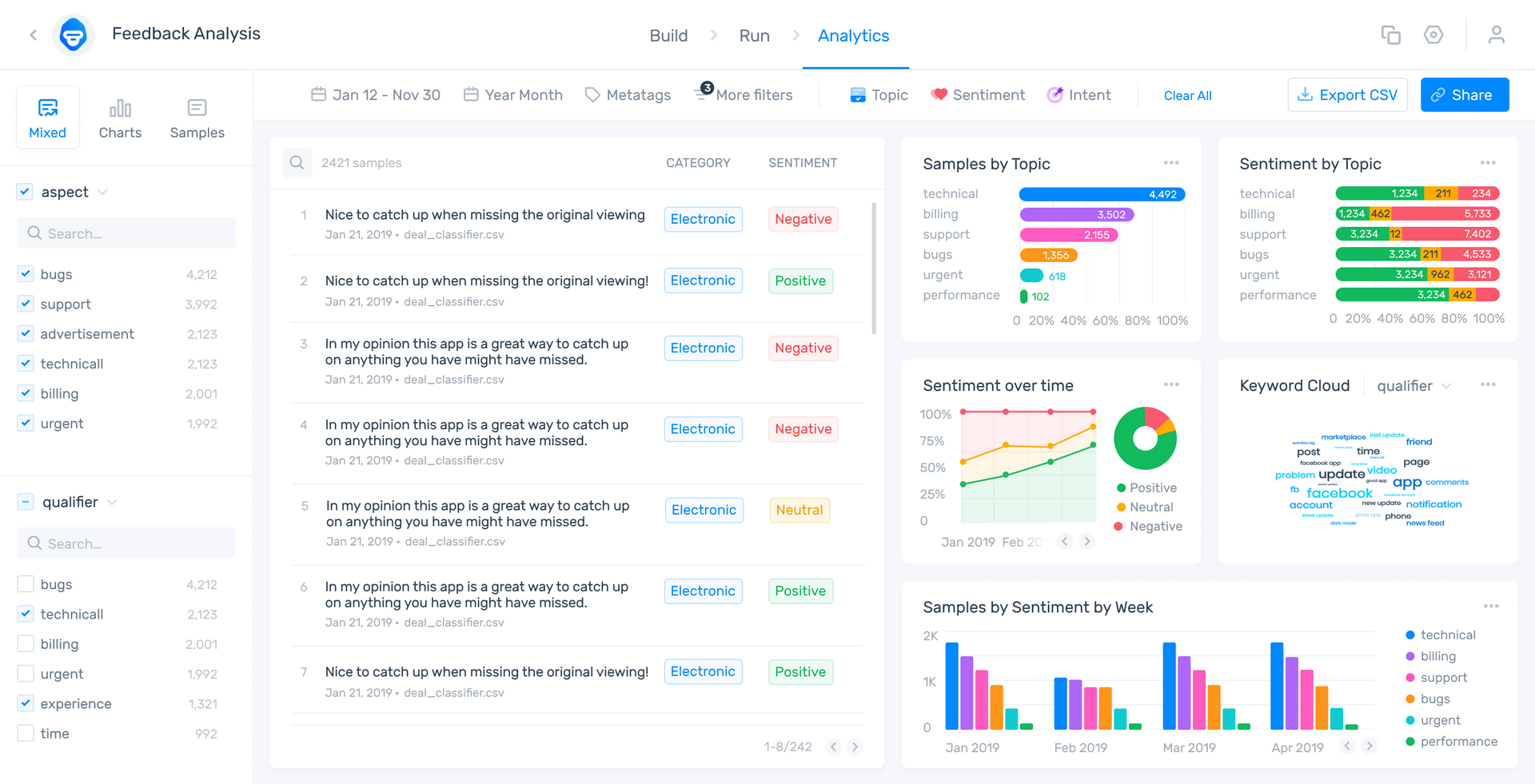What is Digital Customer Experience (DCX): CX for the All-Digital World

These days, the typical customer comes into contact with a business at a number of virtual touchpoints throughout their overall customer experience (CX). These touchpoints range from social media, to mobile apps, to online store UI.
The experience customers have across these digital touchpoints is known as the digital customer experience (DCX).
As digital commerce increases, brands are increasingly being differentiated by customer experience rather than product, as viable alternatives abound online. As such, companies with superior DCX have a competitive advantage when it comes to retaining customers.
Harvard Business Review's data underlines this, finding that companies with the strongest omnichannel customer experience strategies retain an average of 89% of their customers, in comparison to 33% of companies with weak strategies.
Within this overview, we’ll explore the following points, so you can hone your own DCX approach:
- What Is Digital Customer Experience (DCX)?
- Why Digital Customer Experience Is Important
- How to Improve Your Digital Customer Experience
- Digital Customer Experience Tools
- Examples of Excellence in DCX
- Takeaways
What Is Digital Customer Experience (DCX)?
Digital customer experience (DCX) is the complete scope of online interactions between customers and your company. DCX encompasses not only your website but also other touchpoints such as social media, mobile apps, and other virtual channels.
DCX is a holistic, multi-channel view of your brand’s online presence. Rather than isolating your website’s UI, or your advertising’s click-through rate, it measures customer satisfaction as a reflection of all of these at once.
A customer journey might look like this:
- They discover your company through a social media mention,
- They are enticed to give your product a go because of a new subscriber discount they find via a Google search,
- They complete their purchase through your online store, and, finally
- They reach out for live virtual support later on.
If you’ve correctly tuned your digital customer experience, you can guide the customer through a seamless, unified journey through the above steps.
DCX diverges from the ‘big data’ approach that some apply to online customer relationship management (CRM) in that DCX focuses on customer-facing interactions such as customer service chats with live agents. As such, DCX relies heavily on people skills and focuses on improving customer satisfaction rather than driving sales.
Excellent DCX is a continuous listening-and-adapting process without a single, one-size-fits all, end goal. So, effective DCX programs prioritize listening to customer feedback.
Let’s take a look at the value this kind of DCX approach can add.
Why Digital Customer Experience Is Important
The end goal of refining DCX is to increase customer satisfaction, making them more likely to come back for repeat business.
Data demonstrates that good DCX can be achieved by emphasizing seamless, multichannel consistency across all channels – this is known as omnichannel digital customer experience (DCX).
What this means is that your customer-facing teams need to be on the same page in order to create a seamless digital experience to protect your bottom line.
Cohesive omnichannel experiences accurately convey your brand voice and a personalized sense of care to the customer, who in turn can begin to form an emotional attachment to your brand. This will pay off significantly in the long term.
This is the best case scenario for your future sales as customers with an emotional attachment to a company tend to spend more, and even spread the word to others.
Case in point, the XM institute found that 92% of people who gave a high score for ‘emotion’ said they were likely to purchase more from that company.
As for loyalty and likeliness to advocate for a product, Sitecore adds that consumers who have an emotional connection with a brand ‘have a 306% higher lifetime value and are more likely to recommend to others (71% vs. 45%)’.
Given these strong indicators, the value of customer satisfaction is clear. It’s wise to see DCX as the next, incredibly critical, frontier of overall customer experience (CX).
DCX and CX are inextricably linked – just as any big box retailer needs retail staff with the sharpest possible people skills, DCX-savvy companies need customer facing employees with great people skills in their digital service and support teams.
Cutting edge DCX approaches focus on a key synergy:
They combine an emphasis on people skills to promote brand and retain customers with automated feedback analysis to empower their employees using actionable insights from past interactions.
Here are the most effective techniques you can leverage to accomplish this.
How to Improve Your Digital Customer Experience
- Close Customer Feedback Loops
- Track and Resolve Pain Points + Personalize Customer Journey
- Standardize Data to Create Omnichannel Approach
- Unlock Insight with Automation
1. Close Customer Feedback Loops
This is a callback to the importance of listening to customer feedback – except this time we focus on dissatisfied customers.
Reaching out, listening, and adapting to customers who’ve had bad experiences is a must. The goal isn’t just to convince these customers to return – some might, many won’t.
Rather, fixing where you went wrong will prevent the same error popping up in the future for new adopters. This practice of fixing missteps based on negative customer feedback is called closing the customer feedback loop.
Speaking of locating steps in the customer journey for future improvement:
2. Track and Resolve Pain Points + Personalize Customer Journey
DCX-forward companies think of the customer journey as one, continuous, whole. In order to provide competitive DCX, they develop complex customer profiles, find and solve pain points along each customer journey, and personalize their approach in real-time based on what they learn.
This is the other side of the coin to sales data. While a sales team analyzes consumer behavior to better drive them to a purchase, DCX customer data collection focuses on finding out what they can change to leave the customer satisfied with their interaction whether it leads to a sale or not.
Future-forward VoC approaches use customer analysis to generate a personalized experience for each and every customer. Combining both demographic data and nuanced behavior analysis data at each touchpoint allows for the creation of detailed individual customer profiles, which can be used to create custom landing pages, suggest related products, anticipate customer service needs, generate unique incentivized offers, and much more.
3. Standardize Data to Create Omnichannel Approach
Having already gone into the value of a seamless omnichannel DCX, let’s get into the data science behind it, namely how to standardize the language your business uses.
The most crucial step towards a cohesive digital approach is making your data and language accessible to both your team and your customers.
On the internal side, this means efficient and accurate data preparation. Your resulting clean data can then be transformed to provide actionable insights using cutting-edge automated customer experience (CX) software.
4. Unlock Insight with Automation
Automation through intelligent AI is key to simplifying and leveling up any CX or DCX approach.
Integrating automation can make smoothing out this customer journey much easier. Built-in support chatbots can help to collect responses at pain points. Then, integrating an overarching, automation-empowered, VoC programs can easily generate customer profiles, archive them, and mine them for future insight.
Customer experience management (CXM) and digital customer experience management (DXM) AI platforms can eliminate the pain of manual analysis, ensure standardized data, and deliver quantified, actionable results. Read more about the best available automated CX tools here.
In this vein, a plethora of robust and capable automated DXM tools have been recently developed to supercharge your approach.
Digital Customer Experience Tools
Here are the various automated DXM tools available, with a brief look into each one’s specialization.
1. MonkeyLearn: Best Automated Feedback Analysis
If you understand the value of actionable customer feedback to your DXM and want to take your listening approach to the next level, MonkeyLearn is the most capable feedback analysis platform out there.
MonkeyLearn’s AI specializes in turning vast swathes of customer feedback, from text reviews to survey responses to chat logs and more, into quantified, actionable insight.
Pair this with MonkeyLearn Studio’s cutting-edge data visualization, and your team will be equipped with both the most incisive insights available and the ability to present and track them in real-time. This will allow you to constantly monitor your progress and constantly scan for pain points.

2. Zendesk: Best Customer Experience Management (CXM) Platform
Zendesk sets the bar for customer experience management (CXM) platforms with easy integration, comprehensive training and certification programs, and a sleek and intuitive UI.
What’s more, MonkeyLearn has collaborated with Zendesk to offer custom integration, allowing the two formidable programs to work in tandem to deliver industry-leading results. Together they are simply more powerful and effective than all other DXM or CXM options.
3. Hotjar: Best Behavior Analytics Platform
Hotjar are masters of customer behavior analytics. They’ve developed custom heatmap tracking software and a bevy of real-time behavior analysis and survey-generating tools to keep you at the top of your customer analysis game.
4. Intercom: Best Communication Platform

Empowering your support staff with the best possible software is mission critical for providing great DXM. If your messaging platform is subpar your customers and employees will be frustrated, and all of your other preparation will be for naught.
Intercom offers a customizable, business optimized messenger – it combines the best of Slack and Facebook Messenger for both your customers and employees.
Examples of Excellence in DCX
To further entice you, here are some industry leaders who have prioritized DCX and the background of each approach.
Netflix

You may have heard of them. Netflix was able to reinforce customer satisfaction with their platform and further increase cord-cutting by continuously collecting data and customizing individual customer journeys. This is best evidenced by their personalized ‘For You’ recommendations and more.
Garmentory

Leveraging MonkeyLearn’s automated data collection and analysis capability, Garmentory (a boutique fashion distributor) significantly lowered their amount of manual data entry, simultaneously cutting cost and increasing processing capacity.
Sephora

Sephora, a big-time player in the makeup game, revolutionized the online makeup shopping experience by emphasizing seamless omnichannel integration. They did this with virtual try-ons, per-customer digital logs of products tried in store, and full mobile app, physical store, and traditional website integration. Each customer’s Sephora info follows them however they choose to interact with the brand.
Takeaways
In the coming years, experience will trump product as a differentiator between increasingly online commerce.
In order to adapt, a comprehensive, people-first approach to DCX will be required. If you can convey consistent brand sentiment across all your digital platforms you will be well on your way to loyal customers who will buoy your business up to the top of your field. This is only possible through actionable customer feedback analysis and standardized, omnichannel communication.
That’s a lot to ask, but there are easy first steps. Schedule a free demo with MonkeyLearn today to see how you can transform your feedback analysis approach. Or, continue reading about data analysis and all its trappings within our blog.

Tobias Geisler Mesevage
July 9th, 2021






